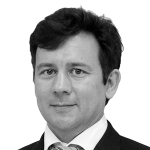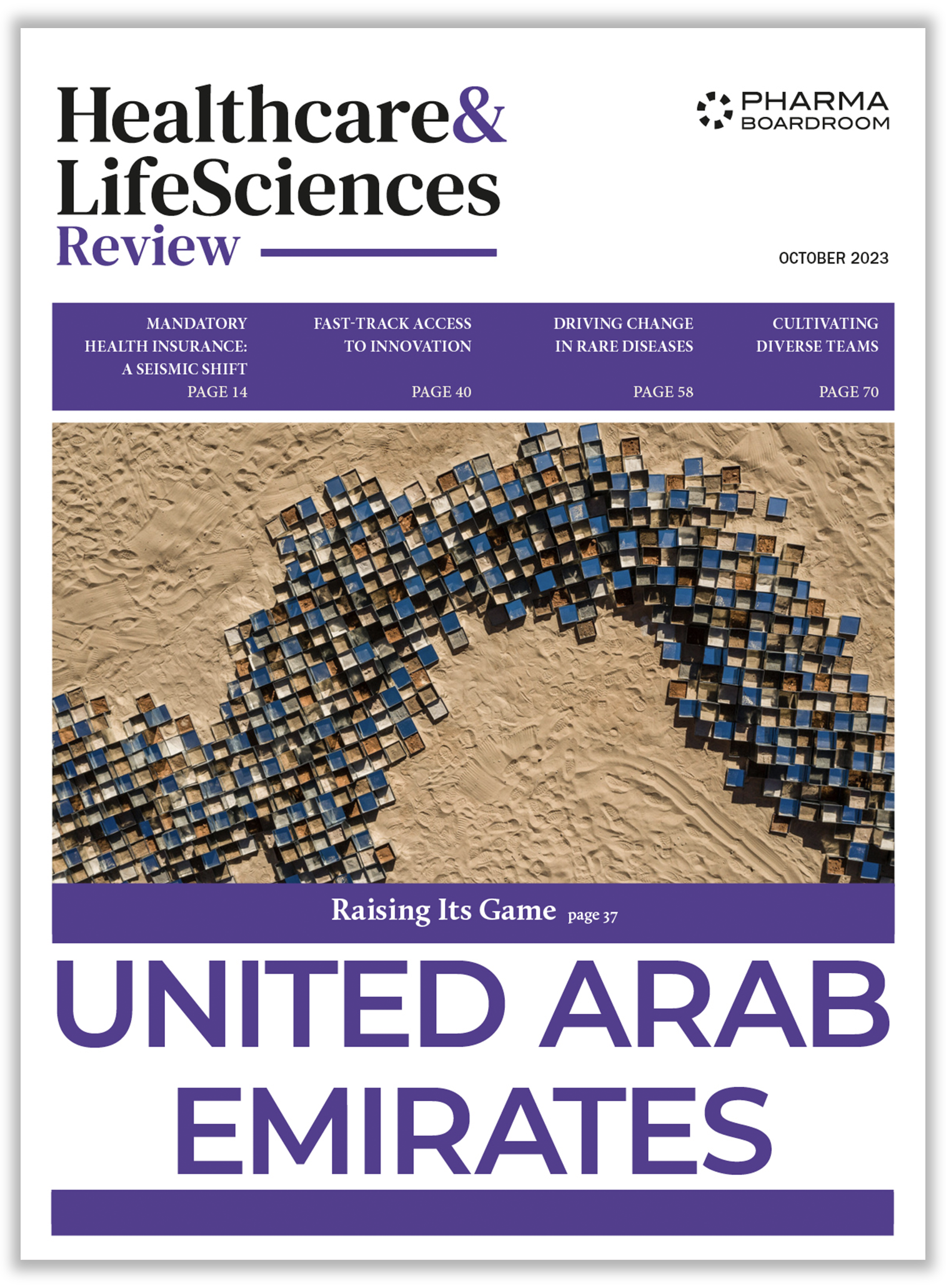Jorge Wagner, President Director at Boehringer Ingelheim Indonesia, explains the importance of innovation within the universal healthcare coverage program that is being implemented in Indonesia. He also illustrates how the affiliate has been one of the fastest-growing pharmaceutical companies in Indonesia during the period 2015-2016.
With recent changes at the global level, including the business unit swap with Sanofi and the recent appointment of Hubertus von Baumbach – the first CEO from the founding family in 25 years – how have these changes affected you on the ground in Indonesia?
Boehringer Ingelheim has certainly started a new phase in its history and every affiliate has embraced this transformation and welcomed the new corporate strategy.
The appointment of our new global chairman has been a natural move since Mr. von Baumbach was already part of the board of managing directors as CFO. Everyone strongly believes in Mr. von Baumbach’s leadership skills to successfully drive Boehringer Ingelheim forward.
The business unit swap with Sanofi has certainly been reflected in our operations in Indonesia and it is worth to mention the two main changes:
Firstly, it has enlarged our product portfolio in the Animal Health business, especially in the poultry area. The inclusion of Merial’s solutions into our product portfolio has opened a big opportunity in Indonesia and we expect strong growth coming from this business unit.
Secondly, even though local players mostly dominate the consumer health domain in Indonesia, our consumer health division was one of the leading divisions in the country. Nevertheless, we have been able to offset the carve-out of our CHC division through our positive growth in human pharma and it will be further bolstered with the performance of our stronger animal health business unit.
You were appointed President Director of Boehringer Ingelheim in August 2014. What have been your biggest accomplishments so far?
Indonesia is a strategic market for Boehringer Ingelheim and in order to accelerate our footprint in the country, we target an above market average growth. Boehringer Ingelheim has believed in the potential of the country since it started its local presence in the 1969, acquiring a manufacturing plant in the early 2000s and undertaking other investments needed to make the most of all opportunities. My mission is to ensure that Boehringer Ingelheim continues to take advantage of the untapped opportunities in the Indonesian market.
My biggest accomplishment so far is a consequence of this business mindset. I am proud that Boehringer Ingelheim has been a strong participant in the latest local industry trends such as the implementation of the universal healthcare coverage program (JKN) while being a strong participant in the out-of-pocket market. Indeed, Boehringer Ingelheim has been one of the fastest-growing players within the top 20 pharmaceutical companies in Indonesia for the past two years.
[Featured_in]
Globally, 27 percent of sales in 2016 came from Australia, Asia and Africa. What is the significance of the Indonesian operations within the regional context?
The role of the Indonesian affiliate within the regional and global strategy has to be defined from three different perspectives: manufacturing, contribution of revenues, and potential.
Firstly, Indonesia acts as a manufacturing hub to serve several neighboring countries such as Vietnam, Thailand, Singapore, Malaysia, Philippines and even South Korea.
Secondly, the Indonesian affiliate is already an important contributor to regional revenues.
Thirdly, it is worth to highlight that, even though Indonesia is still not as developed compared to other countries in the region, the country has steadily had more than five percent of annual GDP growth over the last decade and the pharmaceutical industry is expected to double its size up to USD 12 billion by 2020, mainly due to the promising universal healthcare program implementation. This means that Indonesia will only increase in importance within the regional context.
Boehringer Ingelheim has been one of the first believers in the Indonesian pharmaceutical market and it established a state of the art manufacturing plant in Bogor to serve national and international demand. Can you elaborate on the plant’s current capabilities?
Since early 2000s Boehringer Ingelheim in Indonesia has continuously invested to create an agile and strong manufacturing capability to serve the national and regional demand. We have invested significantly in enlarging our local manufacturing capabilities over the last three years with a team of up to 400 professionals that support our manufacturing operations in Indonesia that are able to fully control the entire cycle of pharmaceutical production for oral and liquid healthcare solutions.
OTC represents more than 40 percent of the Indonesian market and R&D-based companies generally price their products at a higher level than local generics, in a country where a large part of the population has a small disposable income. On the other side we see that purchasing power has increased over the last few years. Considering such a landscape, can you speak towards the challenges and opportunities of promoting innovative drugs in Indonesia?
Indonesia is a market where local players dominate around 70 percent of the pharmaceutical value. Nonetheless, looking deeper into how the industry is organised, local players mainly dominate OTC but the prescription market is more balanced between local and multinational companies. In fact, 45 percent of the branded prescription medicines value is in the hands of MNCs if you segment the market accordingly.
However, compared to other markets, the low participation of innovative medicines within the national pharmaceutical agenda shows that there is a lot to be done in terms of value perception from patients and doctors regarding what innovation can bring to the country.
[related_story]
The strength of multinationals is clearly within the innovative arena of the pharmaceutical market but it is still really untapped in Indonesia. Again, innovation is an opportunity as well as a challenge and medical education is the best way to make healthcare professionals understand the benefits that innovative products can bring to patients.
Boehringer Ingelheim’s corporate business is divided into three major areas: human pharmaceuticals, animal health, and biopharmaceuticals. How is the product offering designed in Indonesia?
Our product portfolio in Indonesia is within the human pharmaceuticals and animal health areas; the former representing more than 80 percent of our revenues in the country. We carefully select our product portfolio in order to ensure that it is aligned with the national healthcare goals and that it targets the specific market needs. Our portfolio here may be more mature compared to other markets but it also permits a higher cost attractiveness.
There is an epidemiologic transition in Indonesia with a stronger focus by the government on treating chronic diseases. How do you think this transition will impact your product portfolio?
This transition is partly a consequence of the development of the country – with an ageing population that suffers from those types of diseases. Our portfolio perfectly matches the epidemiologic transition that Indonesia is currently experiencing.
In fact, Boehringer Ingelheim has a leadership positions in cardiovascular, metabolic, respiratory, and Parkinson disease in CNS. Furthermore, we have just launched our first medicine in oncology in Indonesia and we aim to become a strong player in that area as well.
We also successfully develop a strong collaboration projects with Non-Communicable Disease Directorate in Ministry of Health Department for chronic diseases such as Diabetes, Asthma & COPD in aiming to achieve Sustainable Development Goals (SDGs) in healthcare for better Indonesia.
In diabetes, we recently launched the application of CekGulaKu for raising public awareness. While in Asthma and COPD we have INHALE project (INitiative for Healthcare Awareness, Liaising & Empowerment) in which Boehringer Ingelheim will support Asthma & COPD health promotion in Primary healthcare setting in order to shift paradigm from curative approach to preventive approach.
As a global research driven company, what is Boehringer Ingelheim doing in the country in order to enhance the R&D landscape?
Boehringer Ingelheim’s corporate business model is based on considerable investments in innovation and the company invests more than 20 percent of its total revenues in developing R&D activities globally. In my opinion, R&D is a key driver for economic development and there is still a lot to be done in Indonesia. We manage clinical development from a regional perspective, and we are committed in developing clinical trials in the country.
The Indonesian Universal Healthcare Program (Jaminan Kesehatan Nasional – JKN) is going to be one of the main growth drivers of the Indonesian pharmaceutical industry, especially for generics. How would you define the space for and role of innovative products within the JKN scheme?
There is a list that defines which products can play a role within JKN and the national committee that selects which drugs are listed in the directory has always demonstrated willingness to include innovative medicines that can create healthcare breakthroughs within the JKN scheme.
Even though the expansion in Indonesia will mainly come from non-branded generics, it is true that there are also interesting opportunities for innovative medicines to be listed within JKN. However, the main barrier for such entrance is the price level that is inherent to innovative medicines.
Nonetheless, positivity remains in the existing intention of including innovative medicines within JKN. In my opinion, the presence of innovation in the Indonesian universal healthcare program will increase once the financial situation becomes more stable. The willingness is there and the epidemiologic focus on chronic diseases will increase the demand for innovative drugs.
CSR is engrained in Boehringer Ingelheim’s corporate culture through its global “Making more health” program to improve prevention, diagnosis and treatment. Last month you signed the “Angels initiative” program to establish stroke treatment centers in hospitals that will enhance the treatment for each stroke patient in Indonesia. Could you explain to our international audience the impact of such initiatives?
We are very proud of our CSR activities developed in Indonesia and last year our affiliate was the winner of the “Making more health” corporate award thanks to an initiative that was developed in conjunction with a local partner to enhance the population’s access to medical insurance.
Concretely, the “Angels Initiative” aims to implement best practices in stroke treatments across Indonesian hospitals. The “Angels Initiative” focuses on the growing need to optimally treat strokes once the patient arrives to the hospital. This will become even more important once JKN is fully implemented. Thus, we are actively and openly collaborating with national and international stroke associations to perfectly define the best standards for stroke treatments in order to save the lives of many Indonesian patients.







